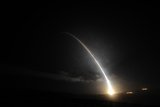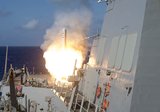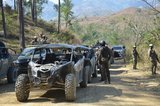PAS 2011: VSI presses for U-turn on JSF alternate helmet
A requirement to replace the troubled Joint Strike Fighter (JSF) helmet mounted display system (HMDS) with an interim solution could be axed, according to manufacturer Vision Systems International (VSI).
Speaking to Shephard at the Paris Air Show, VSI president Andrés Brugal said a 'Helmet Improvement Plan' would be proposed to JSF prime contractor Lockheed Martin this week which could reverse the US Department of Defense's decision downselect an alternate legacy HMDS.
In March, Lockheed Martin published a Request for Proposals (RfP) for an alternate HMDS with BAE Systems and Gentex understood to have responded. Sources told Shephard that a decision was due to have been made within the next ten days but according to Brugal, this has now been pushed back to August.
'Our Helmet Improvement Plan was presented to Lockheed Martin and they accepted it and we will be proposing it this week,' he said. 'Lockheed Martin is reviewing the RfP for an alternate system, but we have provided positive enough results [in the improvement plan] to show a path that might make an alternate unnecessary.
'The government still needs to be confident that their requirements are met,' Brugal explained while outlining requirements to have a HMDS ready to go live with the US Marine Corps' initial operating capability in the Fall of 2013. 'We need a schedule that supports that,' he urged.
The JSF HMDS problems stem from difficulties encountered integrating the aircraft's Distributed Aperture System (DAS) night vision capability onto the pilot's visor. This has lacked sufficient acuity when compared to in-service analogue night vision devices, sources said. However, Brugal stressed that VSI had seen 'compelling results' regarding development of the Helmet Improvement Plan.
'Latency related to image core processing and resolution of DAS sensors didn't satisfy the pilot's needs,' he described while discussing how VSI would now use a helmet-mounted camera as the primary sensor for night vision operation. However, the DAS will remain the primary sensor for daylight operation.
Comprising improvements to the Electrically Bombarded Advanced Pixelated System (EBAPS) sensor, VSI's solution includes the upgrade of the Interval Sensor Image Emitter (ISIE) 10 to ISIE 11. Also, Brugal described how a 'jitter' problem with the HMDS would also be rectified by software upgrades and the integration of an inertial motion unit.
To reinforce his confidence in the system, Brugal explained that VSI had been asked to propose an alternate solution of its own although the company refused to do such a thing due to its confidence that it could meet requirements with the existing HMDS.
More from Defence Notes
-
![US lawmakers warn that “more military spending is absolutely necessary” to ensure Pentagon’s readiness]()
US lawmakers warn that “more military spending is absolutely necessary” to ensure Pentagon’s readiness
The US Congress has raised concerns about how inflation rates and cuts in main acquisition programmes could affect the US military.
-
![US FY2024 funding package passes as China closes military capability gap]()
US FY2024 funding package passes as China closes military capability gap
The Pentagon has been operating under temporary funding since October 2023, which has impacted its main acquisition and development programmes, increasing the capability gap between the US and China.
-
![NATO outlines future challenges as Ukrainian funding from US stalls]()
NATO outlines future challenges as Ukrainian funding from US stalls
In 2023, defence spending increased by an unprecedented 11% across European NATO countries and Canada. Since 2014, the group has spent an additional US$600 billion on defence.
-
![US Pentagon to reduce investments in main acquisition programmes over FY2025]()
US Pentagon to reduce investments in main acquisition programmes over FY2025
The DoD requested nearly US$850 billion to fund operations over the next fiscal year. Despite the amount being 1% higher than the FY2024 budget request, it has not covered the 3% inflation rate, which could impact the DoD’s main programmes in the medium and long term.
-
![Haiti crisis forces Caribbean militaries to prepare for intervention]()
Haiti crisis forces Caribbean militaries to prepare for intervention
As gangs gain control of Port-au-Prince, Haiti’s Caribbean neighbours have been preparing to intervene in the failed state, with the US and other partners waiting in the wings with equipment and financial support.
























